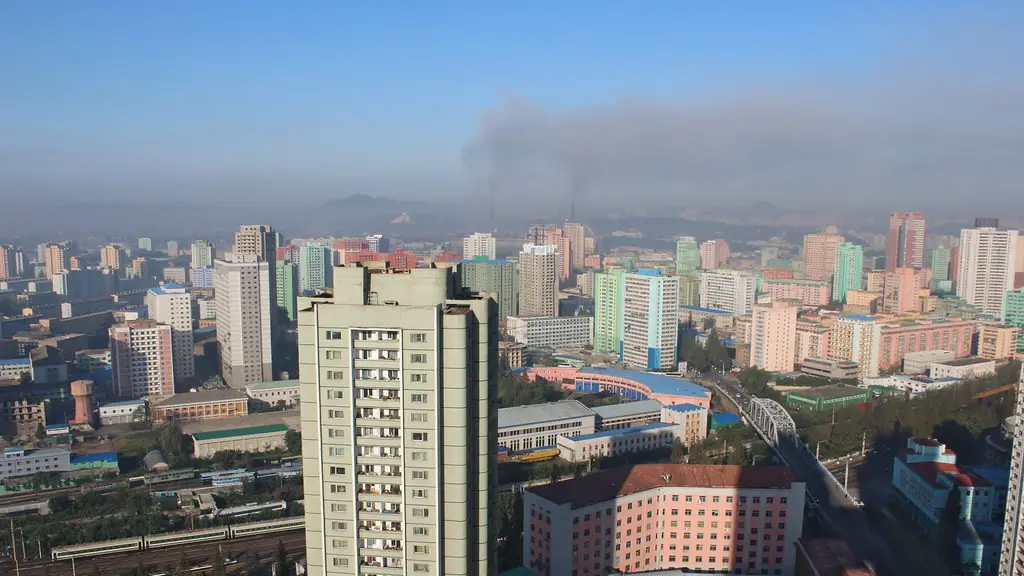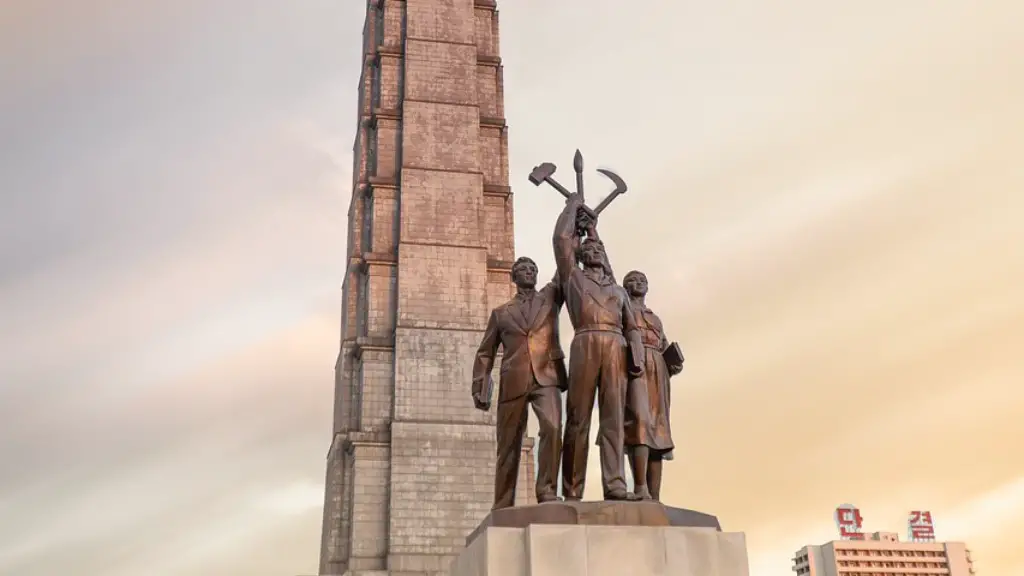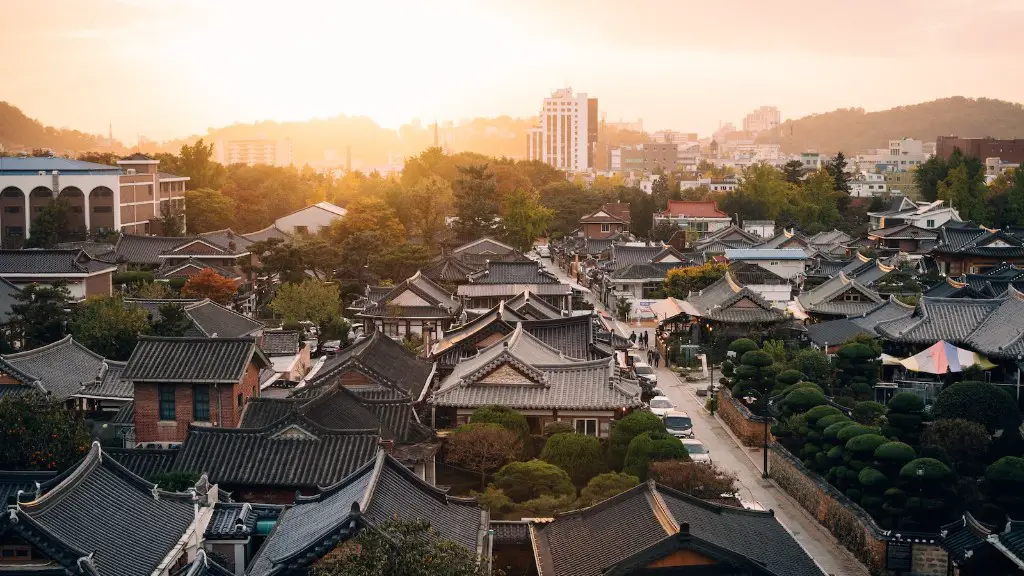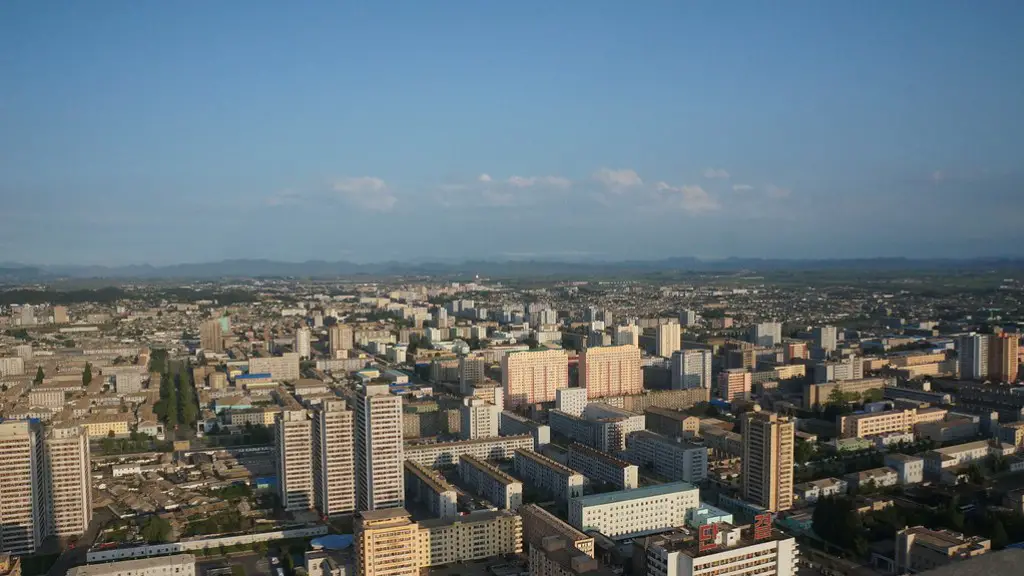History
To grasp why there is a North and South Korea it is necessary to begin with the core events that created their respective identities. South Korea, formally known as a republic, was established on August 15th, 1948, and the North two months later, on the 9th of October. It was this former date, regarding the North, when the Democratic People’s Republic of Korea (DPRK) was declared in 1948. The underlying motivation behind the creation of the DPRK was to form a Government that echoed its Soviet ideals. Throughout the rest of 1948, Kim Il-sung had been appointed as the political leader for North Korea which saw the rise of a cult of personality since then. In terms of foreign relationships, North Korea and the Soviet Union had the closest relationship, with China being the other primary ally.
The end of World War II promulgated forward the changes felt in their respective Korean governments. Governing over the Korean peninsula after World War II was firstly under the control of the Allied Powers, which mainly included Soviet and America. It was a five-year trusteeship period of occupation which was ultimately abolished. As a result of the political dissent between Soviet and America, they decided on two points of control, splitting into North and South Korea in 1948. The North was influenced strongly by the Soviet Union’s pro-communist ways while the South was encouraged to follow in America’s capitalistic ideologies.
The Korean War
The political differences created by the split inevitably led to the Korean War in 1950. The core cause of the war was rooted in the ideological differences between the two Governments which saw South Korea support a union of all Korea and the North refuse it. The war began with a sweeping attack from the North, eventually launching over the 38th parallel, dragging the United States of America and the United Nations into the conflict. The war did not end with a concrete victory on either side, resulting in an armistice being declared in 1953 and the two countries remaining in an officially declared state of war. The war eventually sputtered out in the mid-1950s, with both sides having lost a large number of military personnel and countless civilians.
Although, when looking at the aftermath of the war, it is evident that the intention of unifying the peninsula had been completely abandoned. The DPRK held back at the 38th parallel and instead entrenched their own independence, made permanent by the armistice agreement.
Cultural Differences
Cultural differences have become increasingly identifiable as the years have gone by, as there have been numerous efforts from multiple sources to produce genuine progress between the two countries, but with no true successful resolution being found. It can be evidenced by the differences between their respective leaders, for example Kim Jong Un in North Korea is a considerably more authoritarian figure than Moon Jae In of South Korea who is considered progressive and pro-democracy.
These differences can also be seen in their respective everyday life, it was reported in 2018 that South Korea was the world’s Ad-blocked country and 8th biggest user of IT products. In comparison, North Korea’s population has limited access to any form of global data and services, instead having to utilize their highly regulated and monitored internal systems.
Reunification Efforts
Focused initiatives to reunify the two countries have never stopped in the years after the Korean War. Throughout the history of the Korean divide, their relationships have continually evolved, but never have there been talks of reunification on the governmental level. It is an objective that still persists however, as South Korea and North Korea continue to publicly express an effort to bridge the divide, for example with the Kaesong Industrial Complex which opened in 2004, where workers from South Korea invested capital into the DPRK in effort for mutual progression between the countries.
More recently in 2018, series’ of talks across the boarders have been met by both sides in an effort to have common ground. Pyeongyang and Seoul endorsed the ‘Pyeongyang Declaration’ in 2018 which saw North Korea commit to put a definite end to warfare and eventually look to develop their infrastructure towards common progression, in line with their national objectives.
Current Reality
The relationship between North and South Korea remain complicated however, with both Governments still quite disparate in their formation. South Korea maintains its stance as a market economy which continues to produce successful results and a high potential for growth, while North Korea still clings to its authoritative reputation, imposing what has been deemed a ‘military first’ policy. From the outside looking in, this juxtaposing of views never provide much hope in the possibility of a unified Korea.
Progress between the two countries remains contingent on the decisions of respective governments, but will likely have to be led by South Korea as it holds the upper hand in terms technological and economic advancements. For many the main hope for viable Korean unification comes from the Korean people themselves, who share a deep appreciation for their shared heritage, culture and identity.
Global Attention
The narrative regarding North and South Korea has been a topical debate since the start of the 21st century. Although progress from either side has never been consistent, international relationship between the two countries has been constantly observed. The past two years have welcomed a significant level of dialogue between both countries but its unlikely this will develop further than a cease of hostilities. It is more likely current developments will remain in line with the 2018 Pyeongyang Declaration.
Efforts to bring the two countries together have also been observed on other international levels, such as the Olympic Games where North and South Korea have shared a unified flag and supporting teams.
Sanctions and Security
The current situation South and North Korea is deeply rooted within their security structures and the sanctions placed on each side. In the South, there is an inclination to promote pro-unification policies, in line with the military exemption for North Korean participants. South Korea also maintains a heavy defence, although higher-level goods exchanges and better connectivity have been seen to happen, primarily from their perspective.
On the contraposition, North Korea relies heavily on self-imposed and international sanctions as a deterrence from external animosity, which includes Chinese and US sanction which see an extremely restricted level of trade and exchanges.
Impact on Korean People
The divide has had a crippling effect for those living at the borders, often living in a ghost-like level of disconnection with little to no contact with family members life the other side.
South Korea has also seen major economic detriments, with the GDP having taken a 10% hit in 2019 after the dramatic dissipation of their relationship.
For many, the division is a clear reminder of an ongoing political hostility, which has many referring to the current situation as a ‘Cold Peace’.
National Identity
The idea that the ‘Korean people’ is one of contention for Korean and is known to be place of passion. The national identity of South Koreans is known to be more heavily shaped by the international environment and a sense of patriotism, compared to their North Korean brothers and sisters whose national pride is more strongly rooted in a traditional ritualistic context.
Education also plays a significant role in the shaping of perspectives, with the curriculum in North Korea being heavily controlled and focused on what is deemed worthy of educating their youth. In comparison, education in South Korea is much more free and allows for more alternative ideas to be explored.
Diaspora and Beyond
Korean Diaspora, which consists of people all around the world who are of Korean origins, has played a role in bridging the division between North and South Korea. The number of people in the diaspora have had a largely positive effect on both countries from an economic, social, political and security perspective.
The efforts of the Diaspora are not limited to their countries of origin however, as the scale of their action continually grows in effort for a unified peninsula. Such outreach includes the United Nations, World Bank and the International Crisis Group.
Relationship between Nations
The relationship between North and South Korea has been an issue of contention in regions such as Scandinavia and Asia, who host much of the international diaspora. This raises substantial questions concerning a potential unified state, with the narrative being filled with both optimism and pessimism.
Nevertheless, these conversations keep their respective relationships a subject of debate, with many nations such as China and America having an open dialogue between their governments. But, despite this it is unlikely that they would ever be able form an authoritative relationship so long as North Korea maintains its focus on self-preservation.
Penultimate Thoughts
Despite being split for 72 years since the Korean War ended, both North and South Korea still have close ties to each other through the Korean Diaspora and ancient traditions. But ultimately it is clear that resolution for unification is not likely to come anytime soon, given the current state of their political relationship. All that is left is too wait and see how their intertwined histories will play out in the near future.



